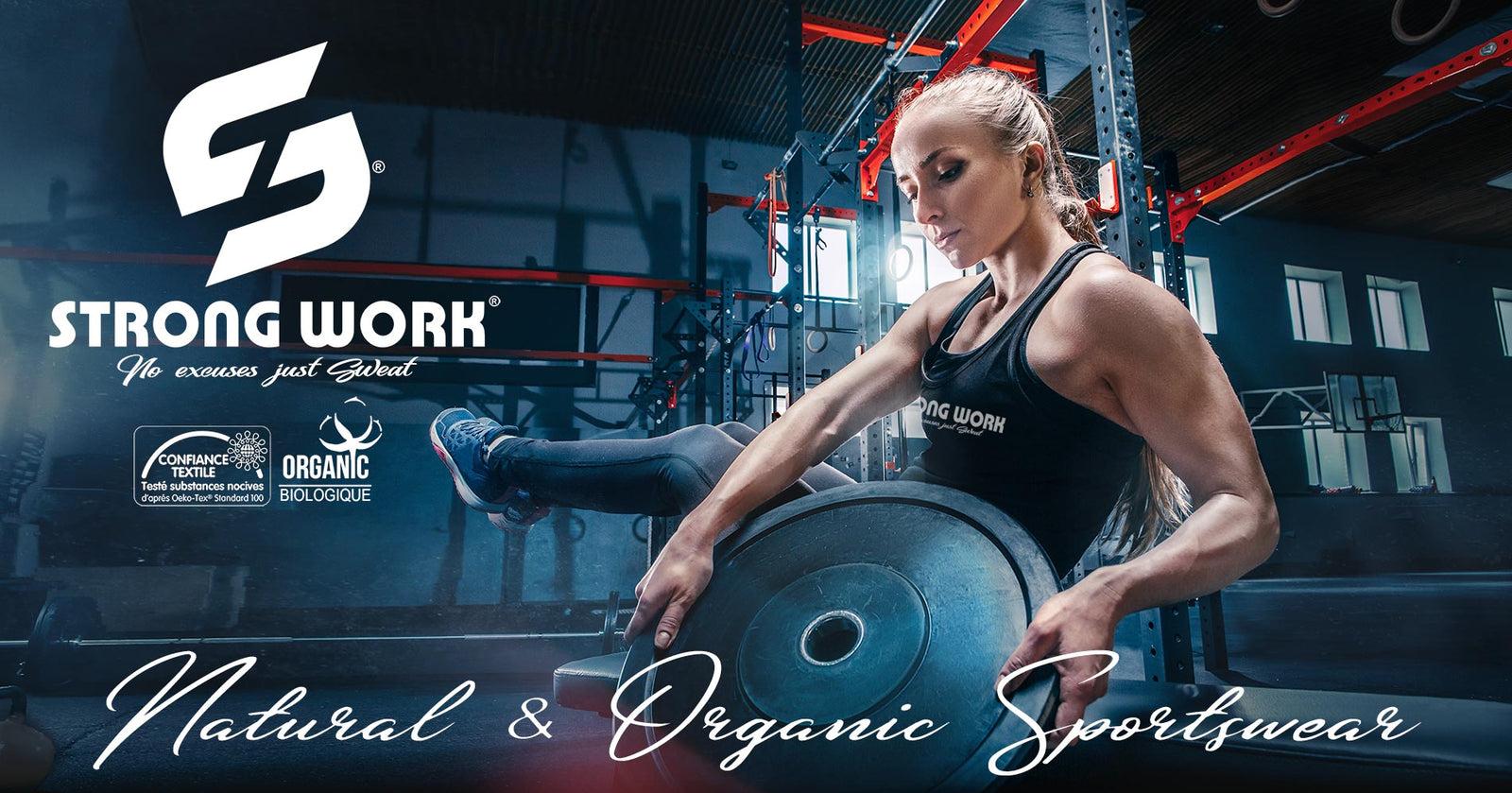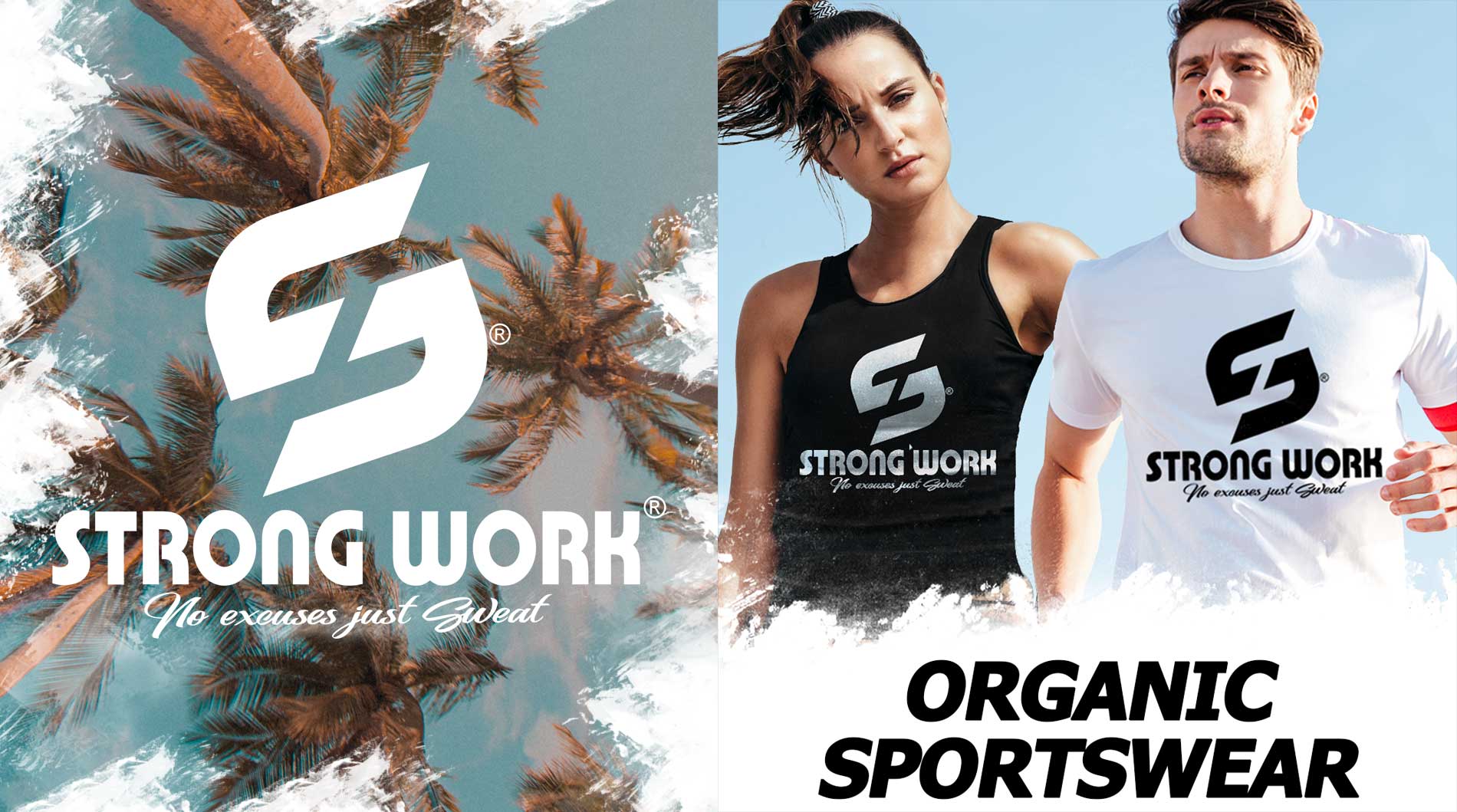Your Cart is Empty
ENJOY FREE DELIVERY FROM £130
ENJOY FREE DELIVERY FROM £130
MEN
WOMEN
Which sportswear for fitness?
September 03, 2021 10 min read

This article is an automatic translation from our Original French blog. This text may contain translation errors. Thank you for your understanding.
Anyone who practices fitness knows: spending a sports session in unsuitable clothing is a real discomfort, and can sometimes even have harmful effects. However, finding the right clothes for our sport is a real challenge: between quality-price ratio and personal convictions, the choices available to us become quickly limited. If, like us, you can't enjoy your fitness session when your sportswear doesn't fit, we suggest you take a look at this article, or rather this guide to the different sportswear available for fitness.
THE IMPORTANCE OF THE MATERIAL OF THE CLOTHING
First of all, you should know that the material of your garment goes far beyond aesthetic expectations. Each fabric has its own properties as a fabric, so wearing a particular material during sports is an interesting parameter for feeling comfortable, both during and after your training. For example, classic cotton fabrics, although natural, are unfortunately cultivated with an enormous amount of water and are composed of numerous products that are harmful to our health, notably due to the use of pesticides. It is for these different reasons that it is important to choose natural materials but also cultivated in an eco-responsible way.
ORGANIC COTTON FABRICS: THE ANSWER TO THIS PROBLEM
Organic cotton fabrics solve the many disadvantages of conventional cotton thanks to the way it is grown. The virtues of organic cotton are particularly appreciated in the context of sporting activities. Sportswear made from organic cotton fibres have the advantage of being
- 100% Natural
- Free of chemicals
- Environmentally friendly
- Eco-responsible
- Easy to care for
- Absorb moisture well
- Anti-bacterial
- Anti-odour
- Hypoallergenic
- Soft and comfortable
- Breathable
- Resistant
As you can see, organic cotton has many valuable qualities for fitness. There is a big difference between a classic cotton garment and an organic cotton garment. The latter, because of its many characteristics, is an important ally for all sportsmen and women who are looking for healthy and quality clothing. On the other hand, synthetic fibres made of chemical products are a nonsense for any athlete who is looking for sportswear that respects his or her well-being.
Another natural material with similar properties to organic cotton is bamboo fibre. Breathable and quite absorbent, bamboo fibre fabrics are light and allow the body to breathe. In addition to being effective against sweat, bamboo fibre clothing is anti-bacterial and anti-odour, which is a major advantage when it comes to sports. This allows all those with sensitive skin to provide it with flawless protection against bacteria, knowing that these organisms proliferate more in humid environments. And of course, if you don't have time to wash immediately after your workout, it's always handy to keep your face looking good!
Another interesting textile is microfibre, which has an intelligent water permeability. This way, it avoids the inconvenience of perspiration. Moreover, its thinness ensures that it dries extremely quickly. For these reasons, you will often see microfibre textiles used in sportswear.
If you want to opt for a more affordable material, you have to admit that polyester T-shirts are still a safe bet in the field of sports, if only because of their value for money. These synthetic fibres are ideal for wearing next to the skin because of their powerful moisture absorption and wicking properties. While this material can be a little rough depending on the model, it is actually very strong and does a wonderful job of insulating and wicking moisture. These garments are sure to last a long time, no matter how long you put them in the machine.
Acrylic is also a synthetic creation. It is described as a thermoplastic, which means that it is wrinkle resistant and has a soft, silky, lightweight feel. It is a true thermal insulator and its fibres can be worn all year round. They offer unquestionable protection to all those with sensitive skin, particularly by repelling ultraviolet rays.
If you plan to train outside in cold weather, you will need to cover up more. And make no mistake, layers of clothing are not to be worn randomly, or your whole body and comfort will suffer! Simply put, the most optimal way to dress for cold weather is to opt for a breathable first layer like polyester or bamboo fibre, an insulating second layer like cotton, and a protective final layer like a waterproof jacket. In this way, heat transfer is managed and promotes body temperature regulation.
Fleece is an advantageous textile in this type of situation because it has all the advantages of polyester and provides one insulating layer at a time, which is a very clever feature if you don't want to be burdened with several layers. The problem with fleece is that it accumulates static electricity and therefore attracts dust. It is also flammable.
After this little textile review, we suggest that you study each item of your sportswear point by point in order to understand which clothes to adopt.
1. UNDERWEAR
This is the first layer to which your body will be exposed. One important thing to remember when choosing underwear is to watch out for chafing. In general, it is unpleasant enough in the middle of a session. But it's even worse if your skin is constantly being rubbed without you even noticing, and the burning sensation can quickly catch up with you! There are several possibilities for you ladies who use bras. Firstly, the seams should not be too constricting, so you should choose a model with flat seams. Secondly, depending on the layering technique, you should consider the material of your underwear so that it is breathable. Textiles combining polyester with elastane or polyamide, for example, are designed for this purpose. In addition to being breathable, they are stretchy, which is always a plus when you put them on. Finally, adapt your bra according to the degree of intensity but also to the type of exercise you do, in order to have a better support of your chest in case of strong impacts. A multitude of bras can be found both online and in shops, each with their own characteristics to offer you maximum comfort during your sport.
2. THE TOP: TANK TOPS, T-SHIRTS, AND SWEATSHIRTS
The choice of your tank tops, t-shirts and sweatshirts for sports use must be thought out according to the material and the shape. The most important thing when doing fitness is to be comfortable in order to be able to fully execute the movements and to have a correct performance. In addition to the aesthetic aspect of your top, it must be loose fitting and allow you to move freely. Sports shops offer different models to make sure you can find something that suits you. While some sportsmen may prefer oversize, there is no guarantee that this fit is right for you, and perhaps a more fitted fit is more in keeping with your style. The same goes for the collar, with the only difference being that high collars are less recommended for practices involving this area. As for sweatshirts, choosing a model with a zip is smart if you know that you are likely to want to undress, or just in case. In the same way, choosing a hooded model provides extra comfort if you are practising outdoors and don't want anything to fall on your head (whether it's drops of water or dust if you're in the forest). You are free to wear the colours of your choice, but don't forget that your training will leave nice sweat marks!
3. BOTTOMS: JOGGING SUITS, LEGGINGS AND SHORTS
Your choice of bottoms will depend on where you are training. Outdoors, jogging shorts are more likely to give you protection while still remaining flexible. This tip depends on the brand, but don't hesitate to go up a size if you want to feel free to move. Because of its width, the jogging suit will not be in complete contact with your skin. So you can opt for a cotton product even if it is the only layer at the bottom. The latter will not cause you to sweat. However, a jogging suit is always heavier than a legging, so this is a criterion to take into account if you want to keep it light. Leggings are more suitable for indoor use, but can be used for multipurpose use. In fact, there are more demanding selection criteria when buying leggings. For example, the leggings should provide a good fit, especially if you are doing strenuous activity. A high-waisted model is therefore a good choice to guarantee this support. Be careful, although you need to keep a certain amount of support, your stockings should not be too tight! The material of your leggings should also be taken into account, and polyester or a combination of polyester and polyamide should be preferred. You can also simply rely on your preferences for the cut. Some models are shorter and stop at mid-calf, while others are ankle-length. Again, what matters to you is to limit chafing, which causes irritation, and to make it easier for you to move. For shorts, it's a good idea to get ones with slits in the sides to improve your mobility and give you a bit of air. Indeed, doing squats or lunges with strict shorts is not always the most comfortable solution.
4. SHOES
Contrary to popular belief, whether you work out in the gym or outside, you cannot afford to neglect the way you wear your shoes. Admittedly, this area is more fussy than the others, and your attention should be focused on how you intend to use your shoes.
Their usefulness is non-negotiable: your shoes will serve as a pillar, and their role will be to protect your feet by absorbing all shocks. You must therefore choose them with the greatest care! Here are a few explanations and scenarios to help you choose your shoes.
For example, many indoor sports enthusiasts decide to exercise in shoes with flat soles. Most of them explain that they do so not only for the stability they provide, but also for the flexibility they offer. This choice is not only based on experience but also on scientific support. Wearing shoes with soles that are not reinforced at any point on the foot allows indoor athletes to distribute their weight as they see fit, and to prevent unintended movements when lifting heavy loads. This type of shoe offers freedom of lateral movement, but should be used with care as all these models do not provide support and can therefore easily damage the ankles and allow them to deviate from their initial position.
Running enthusiasts, on the other hand, should focus on reducing the vibrations that occur every time they put their foot down. These vibrations put them at risk: from simple pain to chronic tendonitis, prevention is better than cure. It is understandable that their shoes will have to adapt and promise cushioning while preserving the runners' performance. Over the years, the sports market has developed models designed specifically for this practice, refining their vibration reduction technology. We invite you to make your own opinion on these models by trying them out in shop. However, the best models for running are those that, in addition to reducing vibrations, provide stability in the axis and are high enough to support your ankles and avoid any risk of sprains, or other more serious injuries.
Finally, you should be aware that shoes should be worn even during indoor fitness sessions! Yes, just because the floor is smooth and clean and you have a mat doesn't mean that your feet don't deserve to be cushioned! The purpose of the shoes during your indoor sessions will be to adhere to your mat. This gives you security and makes sure you stay in place, which is difficult to do in socks.
In any case, one thing is certain: whatever your fitness practice, you should consider a minimum of 1.5 centimetres of thickness for the sole of your shoes in order to reduce the shock suffered by your feet.
5. ACCESSORIES
Accessories are, as the name suggests, optional. That said, they can be more than beneficial as additional equipment in case you have weaknesses, frailties or simply material preferences in certain aspects of your training. For example, your joints may have difficulty warming up when you start training. For this reason, it is useful to consider armbands, or cuffs, to warm up your joint and tendon complexes, which can be removed once your body has managed to prepare for the effort. In another way, the use of a headband can be "just" for comfort, but it can also ensure that your hair is in place and not disturbed when you are exercising.
Accessories such as sponge bracelets on the arms, preferably made of organic cotton, can limit your sweating in this area, giving you comfort and security for your movements.
Finally, those who would like to protect their hands can turn to gloves designed specifically for cross-training. These are mittens that aim to prevent the formation of horns on your palms.
SOME EXAMPLES OF SPORTSWEAR
Now that we've covered all the clothing elements for a successful sports session, why not finish with the best for last, by offering you ideas for outfits for different sports? Yes, there is an outfit for every activity!
RUNNING OUTFIT :
We don't want to go too heavy for this kind of activity, so we'll have to make compromises to be the most efficient. We think of jogging, but leggings are just as useful. These can be long or stop at the calves, it's up to you what you prefer! On top, we take a basic swimming costume but which allows to stay dry. As said earlier, the clothes must let the skin breathe in order to ensure as much comfort as possible, and to dry during the run so as not to get cold once the session is over! Also, running means a lot of impact. Depending on the intensity of the movements, this can lead to jolts throughout the body. Ladies, you should therefore choose a bra that provides good support for your breasts. In terms of footwear, running shoes of your choice will allow you to limit the shocks associated with this practice. An advisor in the shop will be able to give you more precise advice on your size, frequency of use, etc.
CLOTHING FOR INDOOR SPORTS:
For this type of practice, you should not hesitate to be extremely comfortable! So opt for a light and airy t-shirt or tank top, which will allow the skin to sweat, but will also have the role of evacuating humidity! For the bottom, again, something light like leggings will be very practical to allow the body to breathe. Don't forget to wear a bra with strong support so as not to restrict your mobility. As for shoes, choose trainers that have good support and a well-reinforced sole.
LOW IMPACT GYM WEAR:
When doing yoga or low-impact gym sessions, clothes that are rather slim and thus follow the shape of the body are probably the most practical to wear. In fact, it will prevent your shirt from falling on your face many times when you are doing all sorts of different positions. As for the bra, you can choose something soft, as long as the movements you make are calm. Finally, for shoes, choose indoor shoes that are easy to find and that will allow you to stick to the mat and hold your ankles. This will help you to practice correctly.
This concludes this guide to all the clothing options for sports activities! We hope that this guide has given you some ideas for future purchases to improve your comfort and health through healthier sporting habits. Thank you for reading!
SUBSCRIBE TO OUR NEWSLETTER
By entering your e-mail address, you agree to receive our exclusive commercial offers and discounts by e-mail every week and you acknowledge that you are aware of our confidentiality policy. You can unsubscribe at any time using the unsubscribe links or by contacting us at
customerservice@strong-work.co.uk Thank you for your trust in us.
